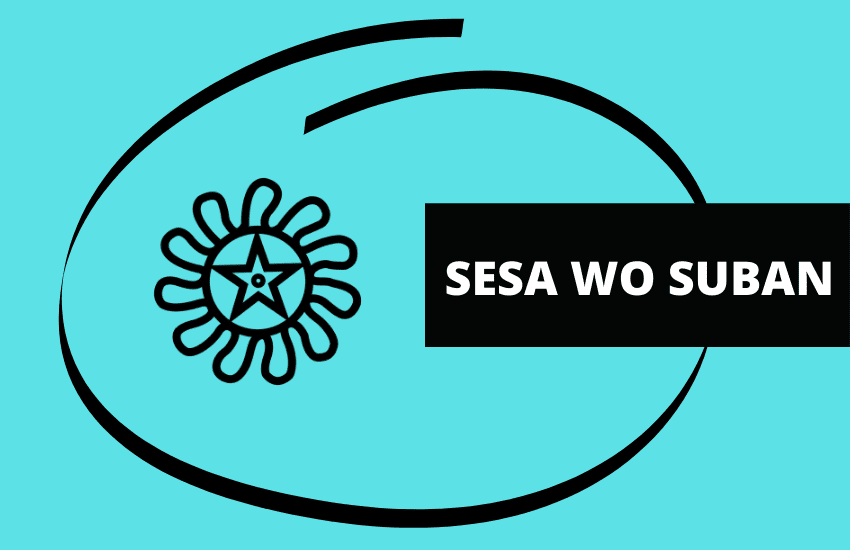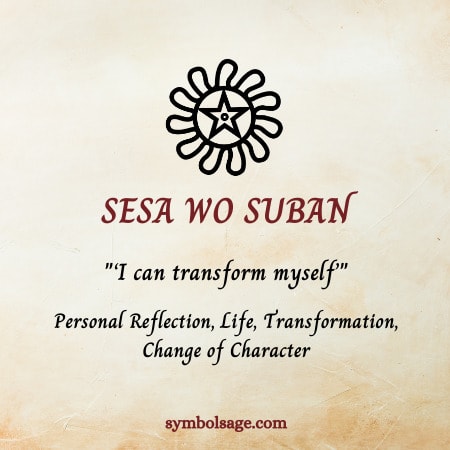
Table of Contents
Sesa wo suban is an Adinkra symbol that represents reflection, change, and transformation of character.
What is Sesa Wo Suban?
Sesa wo suban (pronounced se-sa wo su-ban) is an Adinkra symbol that was created by the Ashanti (or Asante) people.
It combines two separate symbols – the Morning Star placed inside a wheel. Translated, the words ‘Sesa wo suban’ mean ‘change or transform your character’ or ‘I can change or transform myself’.
Symbolism of Sesa Wo Suban
The inner star of this symbol signifies a new day or a new start to the day, and the wheel represents initiative and moving forward continuously. The wheel is also viewed as a symbol of independent movement and rotation. By marrying these concepts together, Sesa wo suban is a symbol of personal reflection, change of character, life, and transformation.
The Sesa wo suban symbol also serves as a reminder to reflect on oneself and take action to make necessary changes. It encourages people, (especially the youth), to change the world for the better by their actions.
FAQs
This is an Akan phrase meaning ‘I can change myself’ or ‘transform or change your character.’
This symbol is the visual amalgamation of two important symbols, the Morning Star and the wheel.
The star is viewed as a symbol of a new day, or a new start.
The wheel in the Sesa wo suban symbol represents independent movement, rotation, and initiative.

What Are Adinkra Symbols?
Adinkra are a collection of West African symbols that are known for their symbolism, meaning and decorative features. They have decorative functions, but their primary use is to represent concepts related to traditional wisdom, aspects of life, or the environment.
Adinkra symbols are named after their original creator King Nana Kwadwo Agyemang Adinkra, from the Bono people of Gyaman, now Ghana. There are several types of Adinkra symbols with at least 121 known images, including additional symbols that have been adopted on top of the original ones.
Adinkra symbols are highly popular and used in contexts to represent African culture, such as artwork, decorative items, fashion, jewelry, and media.








